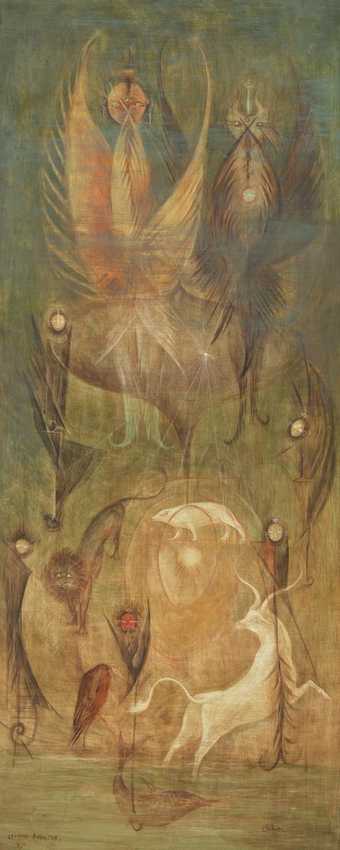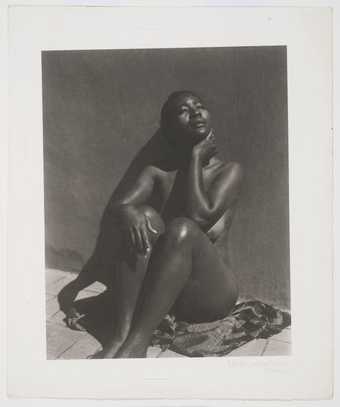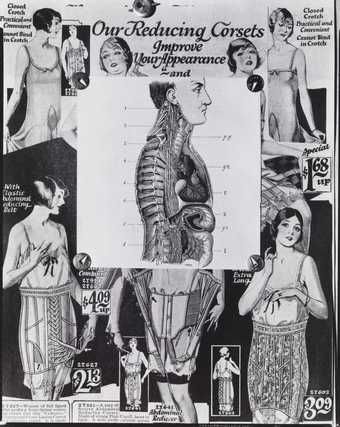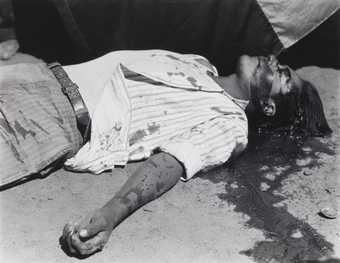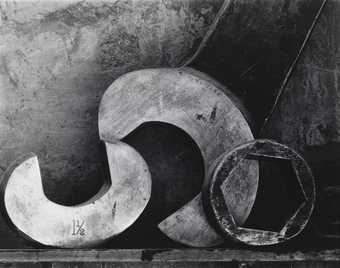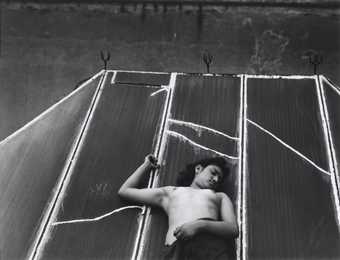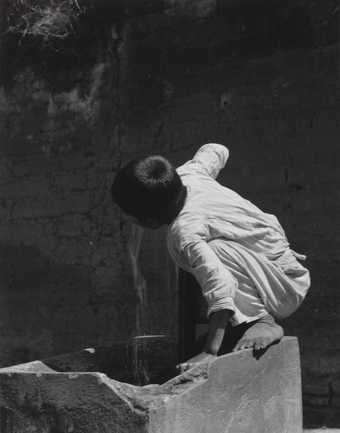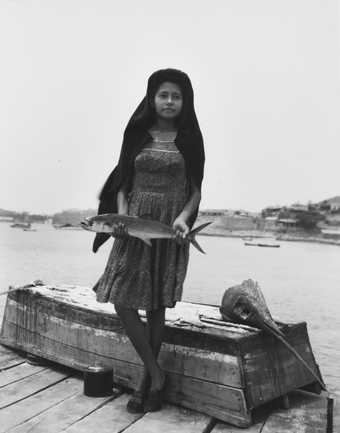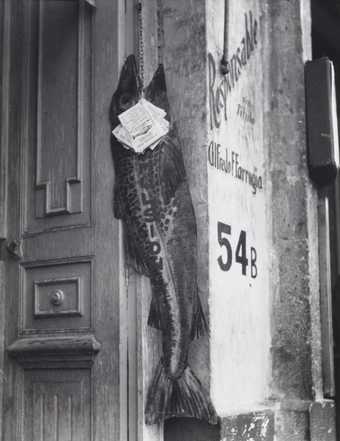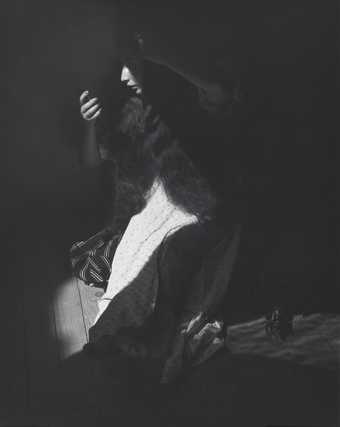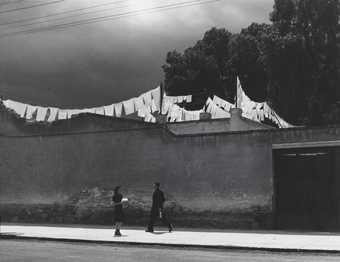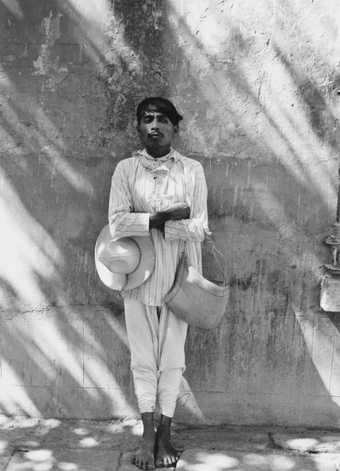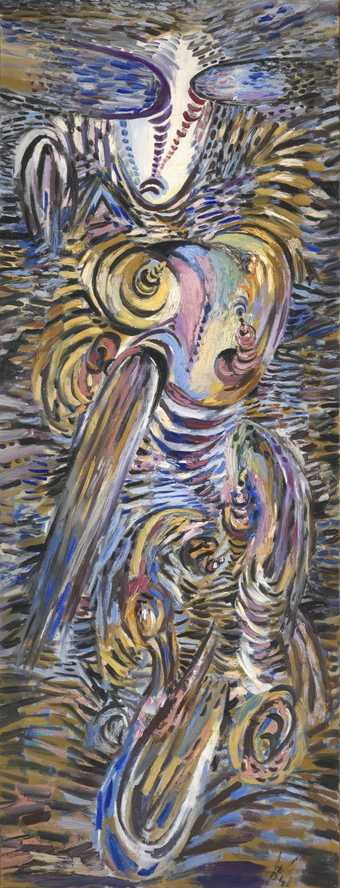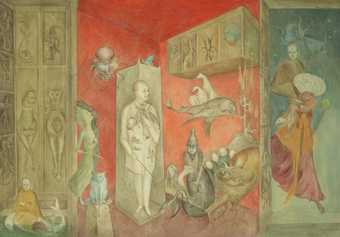
Not on display
- Artist
- Leonora Carrington 1917–2011
- Medium
- Ink on paper
- Dimensions
- Support: 270 × 210 mm
- Collection
- Tate
- Acquisition
- Purchased 2004
- Reference
- T11910
Summary
As with so many artists associated with Surrealism in the 1930s, Leonora Carrington found that the contact brought the liberation of personal imagery rather than any stylistic conformity. This is evident in the intricate draughtsmanship and idiosyncratic subject matter seen in I am an Amateur of Velocipedes, and in Do you know my Aunt Eliza? (T11911), another drawing from the same moment.
Art was a manifestation of Carrington’s revolt against her privileged Catholic upbringing in Lancashire. Having studied painting in London with the theorist of Purism, Amédée Ozenfant, it was through Herbert Read’s Surrealism (1936), published at the time of the International Surrealist Exhibition at the New Burlington Galleries, that she became aware of the movement and of the work of Max Ernst (1891-1976) in particular. In the following year she met Ernst and burst upon the movement at the age of twenty, as a creative femme-enfant (literally ‘woman-child’). In retrospect, Carrington has seen the seedbed for her receptivity to Surrealism in the Irish folktales recounted by her nanny and in the imaginative world of her mother, whom she described as a ‘complete mythologist’ (quoted in Marina Warner, ‘Introduction’, in Carrington 1989, p.3).
The complications of Carrington’s relationship with Ernst, whom she accompanied to Paris, marked the first period of her Surrealist output. Emotional pressure from Ernst’s estranged wife, Marie-Berthe Aurenche, brought a heightened tension to the relationship which only dissipated partially when Carrington and he moved to Saint Martin d’Ardèche in the south of France in 1938. This respite was short-lived. The declaration of war brought Ernst’s imprisonment as an enemy alien (in 1939) and re-arrest as a subversive on the Fall of France in the following year. Carrington suffered a nervous breakdown but friends helped her to cross the border into Spain. After a period in an asylum in Santander, described in her novel Down Below (1943, republished in Carrington 1989, pp.163-209) and from which a number of dated drawings survive, she fled to America in 1941 and on to Mexico in the following year. Her arrival there marked a new, visionary stage in her work, stimulated by the example of the works of Hieronymus Bosch (born before 1474, died 1516), seen in the Prado in Madrid, and by her interest in alchemical imagery. She was at the centre of an active Surrealist circle in Mexico, including the poet Benjamin Péret (1899-1959) and painter Remedios Varo (1908-63), but has always maintained links with the international, especially American, art world.
Like the antiquated title with which it is inscribed, the fine hatching of I am an Amateur of Velocipedes evokes the atmosphere of nineteenth-century novels and children’s stories, with engraved illustrations, admired by both Carrington and Ernst. The drawing shows two figures merged into a hybrid bicycle. The bare-breasted part-figure, at the front, is reminiscent of the Rolls-Royce car figurehead, The Spirit of Ecstasy, with the figure behind providing the wing-like robes. The form of this cloak, together with the lines around the oddly formed front wheel (which suggest bone or turned wood rather than spokes), suggest speed. The arm of the front figure also doubles as the bicycle handle-bars, as it merges with a feathery structure grasped by her blind-eyed companion. She reappears with a horse in a more explicitly harpy-like form in a related drawing More Frontiers of Space 1941 (reproduced in Tribute to Julien Levy, auction catalogue, Tajan, Paris, October 2004, lot 460). The confusion of identity that this hybrid form suggests is taken-up in what appears to be a later inscription by the artist on the back of the drawing: ‘He saw Himself | reflected’.
Bicycles were an important element within Carrington’s personal imagery in this period. Their association with individual freedom (pertinent to one so recently restrained) links them to her favourite image of the horse, exemplified in another related drawing He is in Rollicking Humour 1941 (reproduced in Tribute to Julien Levy 2004, lot 462). More specifically, the cyclists in I am an Amateur of Velocipedes can be related to the characters of Amelia and her father Uncle Ubriaco in Carrington’s 1937-8 story Little Francis (republished in Carrington 1989, pp.69-148). Both comic and darkly disturbing, this story revolves around the triangular struggle between Amelia and Francis for the attention of Uncle Ubriaco. It cloaks in baroque and nightmarish form its source in the real life rivalry between Marie-Berthe and Carrington for Ernst’s affections. In the story (Carrington 1989, p.72), the fascination with bicycles stands for an unusual inventiveness which is summarised by Francis’s first inspection of Ubriaco’s workroom:
The walls were lined with bookshelves that held books, spare tyres, bottles of oil, chipped figureheads, spanners, hammers, and reels of thread. He began to read the titles of the first row of books, which were dusty but in good order: Man and Bicycle, Intricacies of Pedals, Hans Andersen’s Fairy Tales, Tobson’s Essays on Spokes and Bells, Free Wheels and Ball Bearings, The Oxford Dictionary, etc.
The combination of the fantastic, the practical and the imaginative is contained in this catalogue of effects and, in more concise form, manifested in I am an Amateur of Velocipedes.
Primarily because of the better quality of materials than those available during her flight through Europe, it has been suggested that the finished ink drawings were made once Carrington had safely reached New York in 1941 (Salomon Grimberg, ‘Leonora Carrington and Julien Levy’, in Tribute to Julien Levy 2004, opposite lots 482-5). The connection with Little Francis demonstrates the persistence of long-held themes in her work, while the same commentator has drawn attention to the inspiration that another version of this drawing provided for the paintings of her friend Remedios Varo.
Further reading:
Marina Warner, ‘Introduction’, in Leonora Carrington, The House of Fear: Notes from Down Below, London 1989.
Andrea Schlieker ed., Leonora Carrington: Paintings, Drawings and Sculptures 1940-1990, exhibition catalogue, Serpentine Gallery, London 1991.
Susan L. Aberth, Leonora Carrington: Surrealsim, Alchemy and Art, Aldershot and Burlington, Vermont 2004.
Matthew Gale
June 2005
Does this text contain inaccurate information or language that you feel we should improve or change? We would like to hear from you.
Explore
- abstraction(8,615)
-
- from recognisable sources(3,634)
- emotions and human qualities(5,345)
-
- subconscious(62)
- transport: land(2,189)
-
- bicycle(196)
You might like
-
Leonora Carrington Eluhim
1960 -
Manuel Álvarez Bravo Black Mirror
1947, printed later -
Manuel Álvarez Bravo The Sympathetic Nervous System
1929, later print -
Manuel Álvarez Bravo Striking Worker Assassinated
1934, later print -
Manuel Álvarez Bravo Tools
1931, later print -
Manuel Álvarez Bravo Sparrow skylight
1939, later print -
Manuel Álvarez Bravo Public Thirst
1934, later print -
Manuel Álvarez Bravo A Fish Called Sword
1944, later print -
Manuel Álvarez Bravo The Big Fish Eats the Little One
1932, printed c.1980s -
Manuel Álvarez Bravo Portrait of the Eternal
1935, printed c.1980s -
Manuel Álvarez Bravo How Small the World Is
1942, printed c.1960–70s -
Manuel Álvarez Bravo Man from Papantla
1935, later print -
Wolfgang Paalen The Messenger
1941 -
Leonora Carrington Do You Know My Aunt Eliza?
1941 -
Leonora Carrington Transference
1963

